1, 2. The first pair – “up” and “down” are everywhere, being components of atomic nuclei.

3. The lighter of the second pair, “strange” is a consituent of particles heavier than proton and neutron and observed in cosmic radiation in 40-ies. These strange particles can be captured atomic nuclei for a glimpse, before decaying. This picture shows a first noticed trace in the photographic emulsion of a decaying hypenucleus.
M. Danysz and J. Pniewski, J. Phil. Mag. 44 (1953), 348
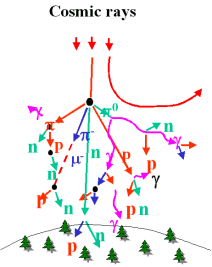 Cosmic rays were first found to be of extraterrestrial origin by Victor F. Hess (c.1912) when he recorded them with electrometers carried to high altitudes in balloons, an achievement for which he won the Nobel Prize in 1936. They were so named in 1925 by R. A. Millikan, who did extensive research on them.
Cosmic rays were first found to be of extraterrestrial origin by Victor F. Hess (c.1912) when he recorded them with electrometers carried to high altitudes in balloons, an achievement for which he won the Nobel Prize in 1936. They were so named in 1925 by R. A. Millikan, who did extensive research on them.
Cosmic rays are mainly energetic protons, of 1 GeV energy, but not only.
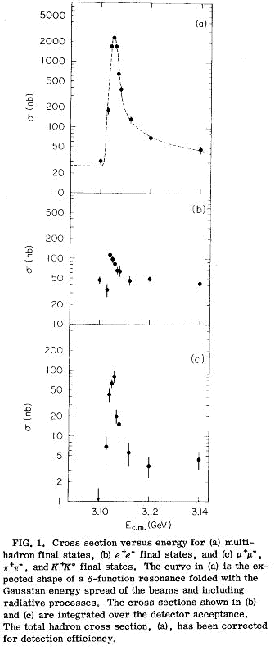
J.-E. Augustin et al., Phys. Rev. Lett. 33, 1406–1408 (1974)
4. The “charm”, completing the second generation was subject to double hunting: in Brookhaven a narrow peak was observed at 3.1 GeV for electron- positron pairs production in
p+Be collisions, in Stanford vice-versa – a peak for hadron production in electron- positron annihilation; the papers were submitted with one day difference, the cc meson brings a double name
J/Ψ and the Noble prize was shared by both groups
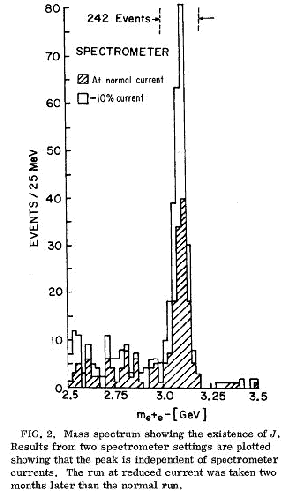
Discovery of the Charmed Baryon
The photograph of the event in the Brookhaven 7-foot bubble chamber which led to the discovery of the charmed baryon (a three-quark particle) is shown. left. A neutrino enters the picture from below (dashed line) and collides with a proton in the chamber's liquid. The collision produces five charged particles--a negative muon, three positive pions, and a negative pion--and a neutral lambda. The lambda produces a characteristic 'V' when it decays into a proton and a pi-minus.
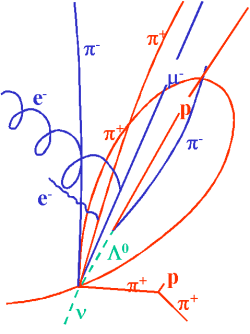
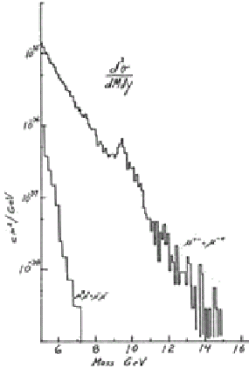
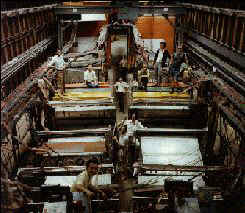
5. The third generation was first predicted theoretically by M. Kobayashi and T. Masakawa in 1974. The “bottom” quark called also “beauty” was observed in 1977 in FermiLab in production of muons from proton scattering on Cu or Pt, as a faint “bump” (Y - Upsilon meson bb ) at 9.5 GeV mass.

6. The last, “top” is so heavy (175 GeV) that becomes a father for generations of other particles – so called jets; its mass was predicted correctly by the theory and was measured with the best accuracy in the whole quark zoo.

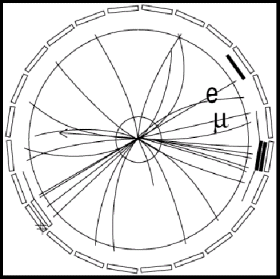
A computer simulation of a proton-antiproton collision.
The tracks show the paths of different kinds of particles created in the collision.
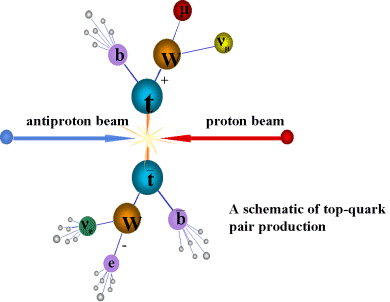
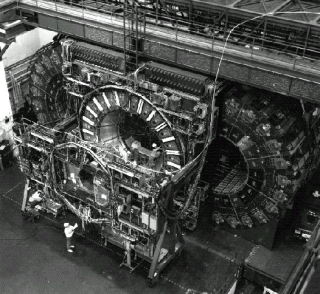
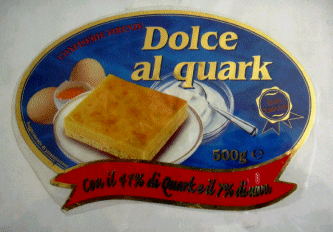
Bigger and bigger machines are needed to find small quarks.
So if you have no money, or you do not believe in new quarks, you can find it always in
the bakery shop in Trento, Italy.
Special credits to FermiLab for permission to use internet material
http://www.fnal.gov/pub/inquiring/physics/discoveries/index.html
- Marjorie Bardeen